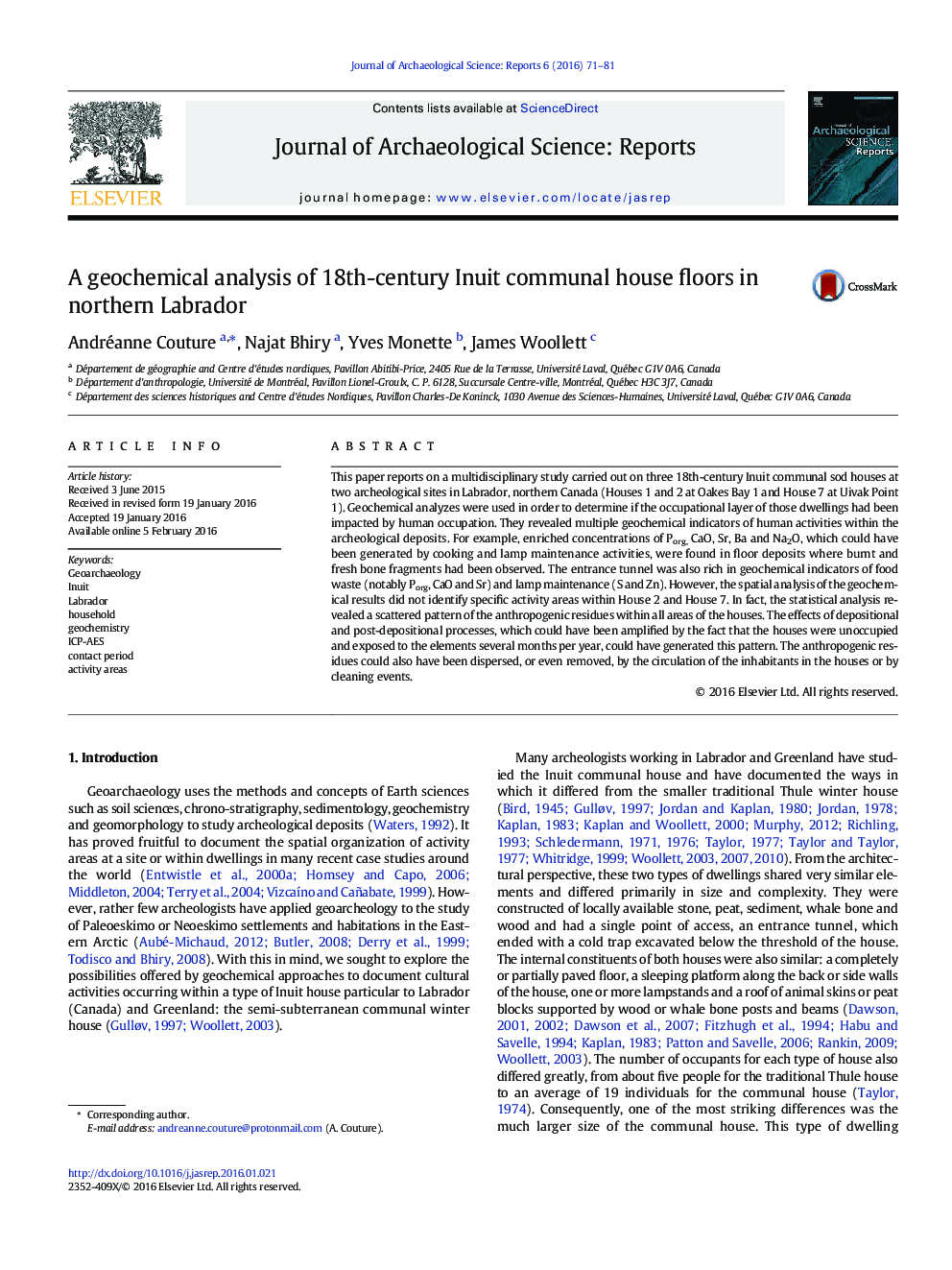| کد مقاله | کد نشریه | سال انتشار | مقاله انگلیسی | نسخه تمام متن |
|---|---|---|---|---|
| 10499976 | 944186 | 2016 | 11 صفحه PDF | دانلود رایگان |
عنوان انگلیسی مقاله ISI
A geochemical analysis of 18th-century Inuit communal house floors in northern Labrador
ترجمه فارسی عنوان
تجزیه و تحلیل ژئوشیمیایی ساختمان خانه های عمومی انویت در قرن هجدهم در شمال لابرادور
دانلود مقاله + سفارش ترجمه
دانلود مقاله ISI انگلیسی
رایگان برای ایرانیان
کلمات کلیدی
موضوعات مرتبط
علوم انسانی و اجتماعی
علوم انسانی و هنر
تاریخ
چکیده انگلیسی
This paper reports on a multidisciplinary study carried out on three 18th-century Inuit communal sod houses at two archeological sites in Labrador, northern Canada (Houses 1 and 2 at Oakes Bay 1 and House 7 at Uivak Point 1). Geochemical analyzes were used in order to determine if the occupational layer of those dwellings had been impacted by human occupation. They revealed multiple geochemical indicators of human activities within the archeological deposits. For example, enriched concentrations of Porg, CaO, Sr, Ba and Na2O, which could have been generated by cooking and lamp maintenance activities, were found in floor deposits where burnt and fresh bone fragments had been observed. The entrance tunnel was also rich in geochemical indicators of food waste (notably Porg, CaO and Sr) and lamp maintenance (S and Zn). However, the spatial analysis of the geochemical results did not identify specific activity areas within House 2 and House 7. In fact, the statistical analysis revealed a scattered pattern of the anthropogenic residues within all areas of the houses. The effects of depositional and post-depositional processes, which could have been amplified by the fact that the houses were unoccupied and exposed to the elements several months per year, could have generated this pattern. The anthropogenic residues could also have been dispersed, or even removed, by the circulation of the inhabitants in the houses or by cleaning events.
ناشر
Database: Elsevier - ScienceDirect (ساینس دایرکت)
Journal: Journal of Archaeological Science: Reports - Volume 6, April 2016, Pages 71-81
Journal: Journal of Archaeological Science: Reports - Volume 6, April 2016, Pages 71-81
نویسندگان
Andréanne Couture, Najat Bhiry, Yves Monette, James Woollett,
